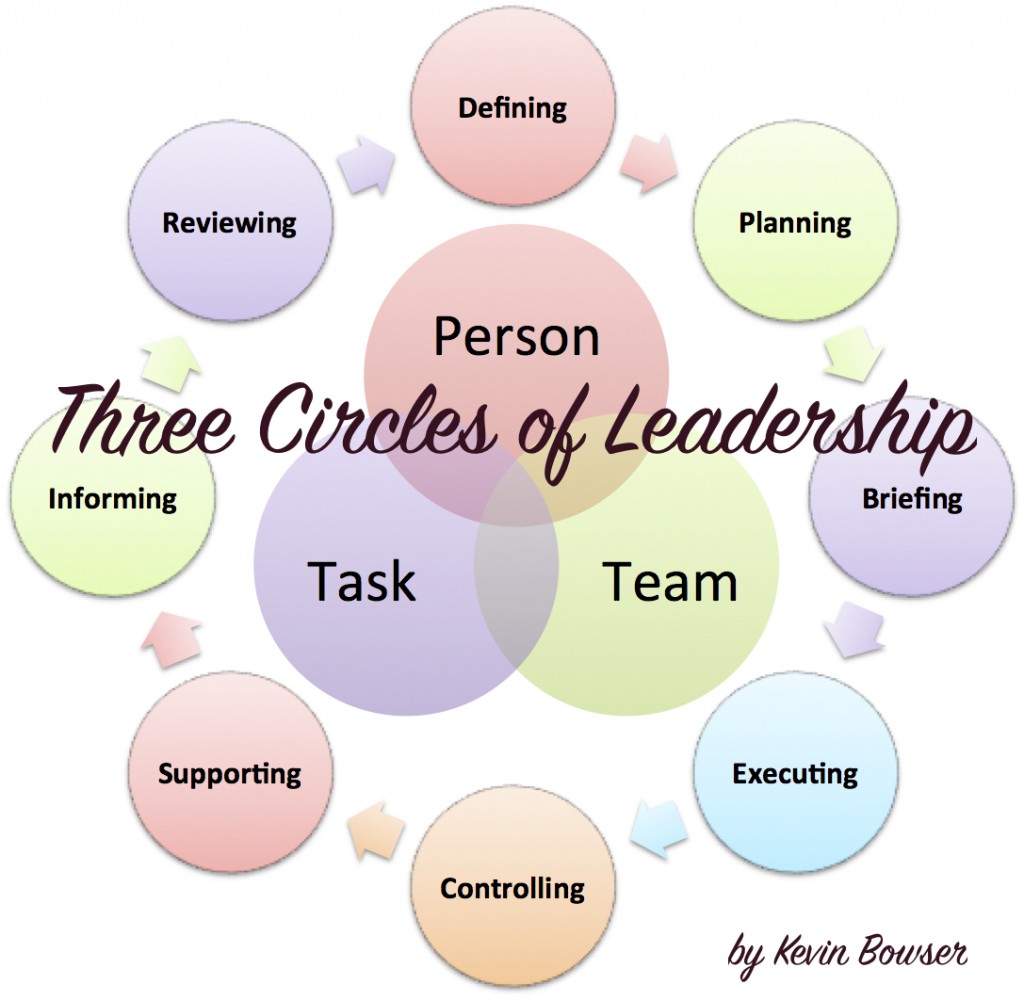A few weeks ago I took a look at the ancient roots of strategic leadership. In case you missed that article, click here and you can get up to speed with my stream of thought that leads us to today’s article.
Socrates observed similarities between businesspeople and generals. Socrates was convinced that a meaningful parallel existed in a businessperson’s focus on profit and loss and the military general’s focus on victory and defeat.
In order be successful as a strategic leader, you must first understand your responsibilities as a strategic leader. Picture, if you will, three interlocking circles: “Task, Team and Person.” Each circle represents an “area of need” that you must master, and each skill contains proficiencies that overlap with the others. Consider these three:
- Task – A strategic leader does not have to have personal mastery of the task itself. But a strategic leader must understand the tasks to be accomplished and must understand the tasks in enough detail to assemble the right team to be successful.
- Team – A strategic leader must understand team dynamics. High performing teams are often referred to as “well-oiled machines.” A well-oiled machine is working smoothly and almost effortlessly even though it has many component parts.
- Person – A strategic leader must be able to relate at an individual level. There is no substitute for visible, hands on, and personal contact with your team. They expect you to be as visible in the tough times as you are in the success celebrations.
A leader must develop and maintain the team, motivate individual members and ensure that everyone works to achieve the objective. A failure of leadership in any one area negatively affects the other two.
To lead others to successful outcomes, consider the “functions” all leaders must fulfill:
- “Defining the task” – What do you want to achieve? Lay out your goals. Create measurable milestones as you define the goals and objectives.
- “Planning to execute” – How will you do it? Come up with methods and procedures. What resources will you need?
- “Briefing the team” – To inspire followers, communicate your strategy clearly. Communicate it early and provide time for the team to “buy in.”
- “Executing the plan” – To execute the plan, systematically work through the small steps that lead to the big accomplishments.
- “Controlling the resources” – A leader must find and engage time, money, people and other resources. They must also keep some in reserve for emergencies and contingencies.
- “Supporting the team / person” – Establish your “organizational” standards and values and provide assistance to make sure the team is successful.
- “Informing the team / person” – Supply information to, and accept feedback from, your team one on one when possible, thus creating an important linkage between them and you.
- “Reviewing the progress” – Develop and monitor performance criteria and milestones along the way. We get what we “inspect and not what we expect.”
Leaders operate at three different levels:
- “Strategic” leaders head entire organizations. They work with their teams to come up with strategic plans and then they work with other leaders to execute the plan.
- “Operational” leaders steer a single component within an overall organization. They have a significant span of control and influence. They generally receive their guidance from a Strategic leader.
- “Team” leaders guide individuals working toward specific objectives. This guidance may have come from a Team leader, Operational leader, or a Strategic leader. These leaders are in the trenches and getting the job done.
There is no greater value in being one type of leader over another. Human nature and pride would have us believe otherwise. These different leadership “levels” just require a different skill set in order to be successful.




Please note: I reserve the right to delete comments that are offensive or off-topic.